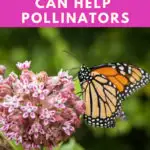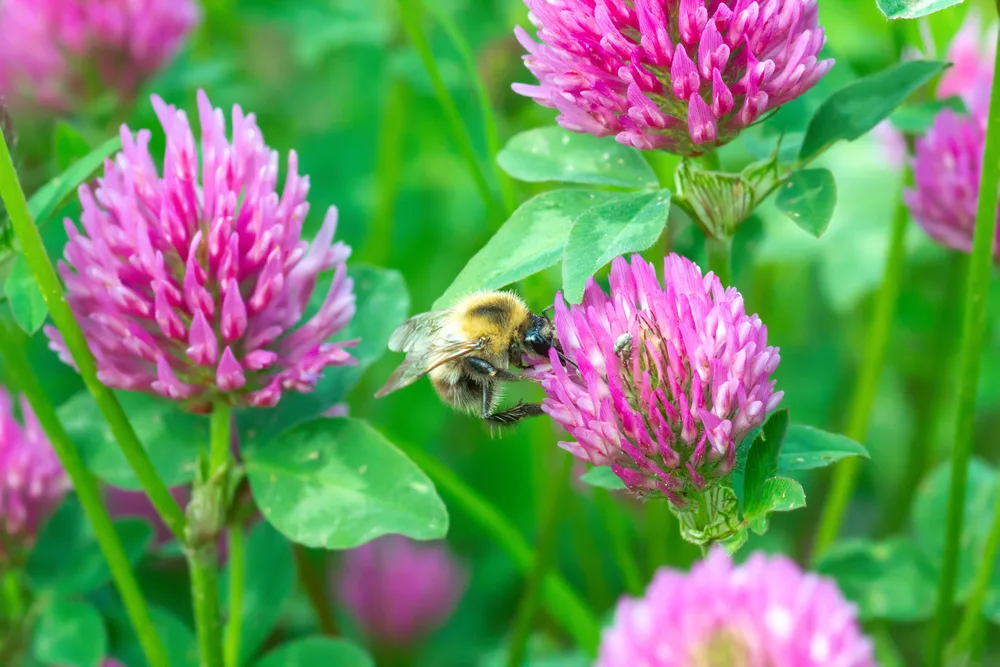
It’s such an incredibly tiny act. We can be standing by while it’s happening and not even notice.
Pollination.
Almost three-quarters of the crops we grow for food are pollinated. (November 2016, Who Are Our Pollinators? Penn State Extension)
Let that sink in for a second as you consider the decline of our natural pollinators worldwide.
It’s alarming, isn’t it?
Pollination
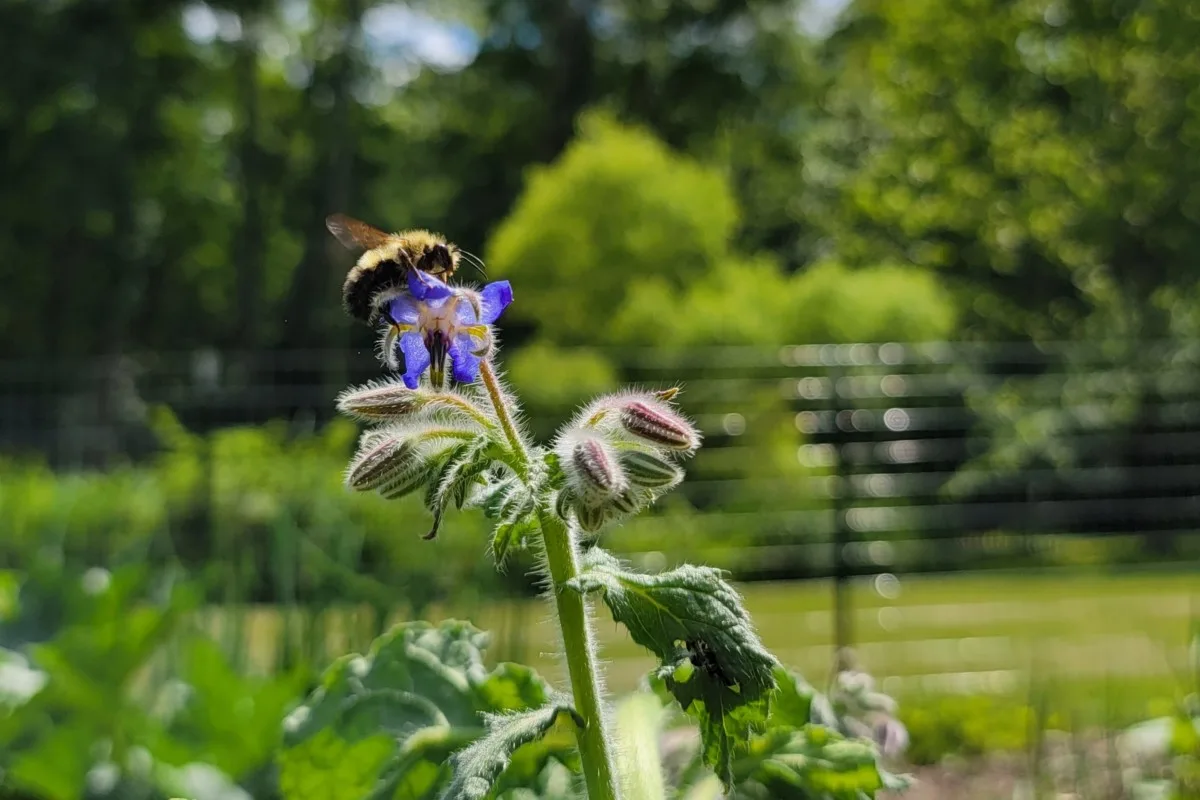
First, let’s take a trip back to elementary school and do a quick recap of this magical process.
If you recall, the male part of the flower is the anther; this is the part that creates the pollen. The female part of the flower is the stigma. For a plant to produce fruit, pollen is transferred from the anther to the stigma where it can grow into a pollen tube and eventually fruit.
Pollination is also how plants create new seeds. So, not only is pollination essential for this year’s crop, but it also ensures the seeds needed for next year.
Where pollination is concerned, there are two types of plants:
Self-pollinators
These are the plants that can be pollinated with their own pollen. A few common self-pollinators you will find in your garden are tomatoes, eggplants, and sweet peas.
While they still rely on a pollinator, you can be the pollinator for these guys if you need to. Check out our article showing you how to hand-pollinate tomatoes.
Cross-pollinators
Usually, when we talk about cross-pollinating, we mean when a plant from one species is pollinated with pollen from a plant of another species, resulting in a crossbred veggie. But here we mean plants who need pollen from another plant of their species nearby. A couple of examples are corn and squash. These guys need the help of pollinators.
For more information on pollination, check out this handy guide from the USDA.
Pollinators
Both types of pollination rely on pollinators – bees, butterflies, birds, and even a couple of species of bats are known pollinators.
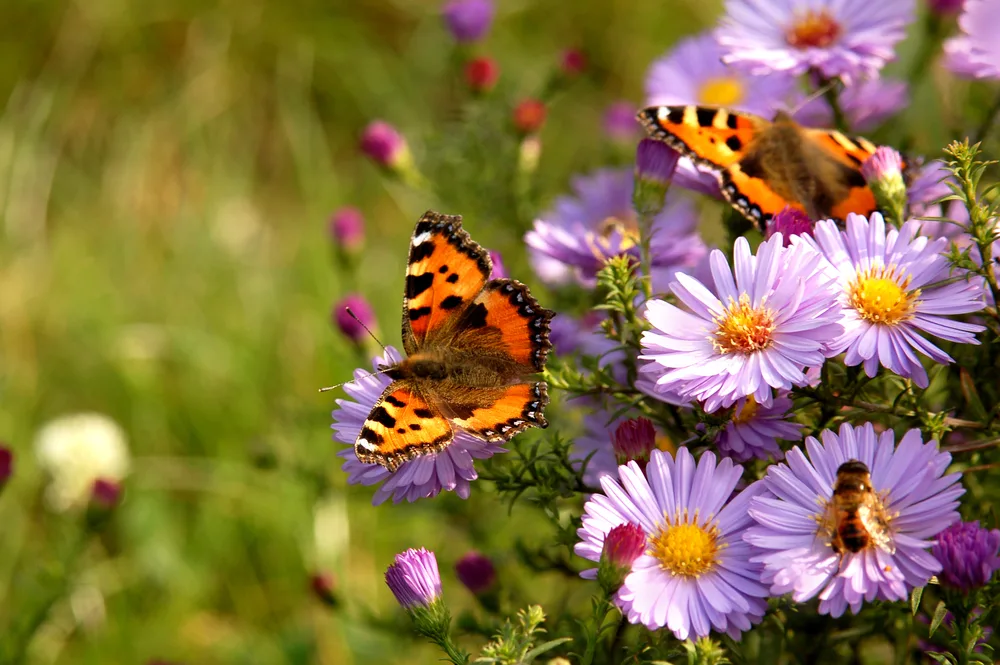
When you talk about pollinators, the first one that generally comes to mind is our buddy, the honey bee. And while he might be the most popular bee, it seems that wild bees do quite a bit of the heavy lifting. And in some cases, they might even do a better job.
According to the article “Who Are Our Pollinators” (November 2016, Penn State Extention), the decline of the honey bee has caused researchers to take a closer look at native bee populations.
I recently caught up with Dr. Christina Grozinger to talk about what the average person can do to help.
Dr. Grozinger is a Distinguished Professor of Entomology and Director of the Penn State Center for Pollinator Research. Her lab studies the social behavior and pollinator health of honey bees at the molecular level.
Christina was also the recipient of the 2021 National Academy of Sciences Prize in Food and Agriculture Sciences. Congratulations, Dr. Grozinger, keep up the stellar work, our pollinators are counting on you.
They look at how the chemicals (such as pheromones) created by the bees affect how they behave and interact with each other. She also studies the varied effects of different stressors on the health of the bees, things like pesticides, viruses, and parasites, and the landscape the bees live in.
Dr. Grozinger said,
“The reason we pay close attention to honey bees is because they’re like the canary in the coal mine. The loss of their numbers indicates a much larger problem.”
I spoke with Dr. Grozinger at length about some of the issues facing bees (in general, not just honey bees) and what we can do as individuals to help our struggling pollinators. She said,
“The main issues seem to be land-use changes. For bees, it’s [us] getting rid of the flowering plants that they use for nutrition and also the habitat that they’re nesting in. For other insects, it’s the same thing, disruption of their habit. And then also climate change, which has been hard to study because you need really long-term or very large data sets. The more people have been looking at that, that seems to be a major factor in these declines.”
While many of these problems need to be addressed on a global scale, there is still plenty that you can do to help our native pollinators right in your own backyard.
Since we all love lists, I’ve put together a list of some of the ways you and your family can help – bees, butterflies, and birds. Let’s take a look.
At Home
1. Leave some of your land undeveloped.
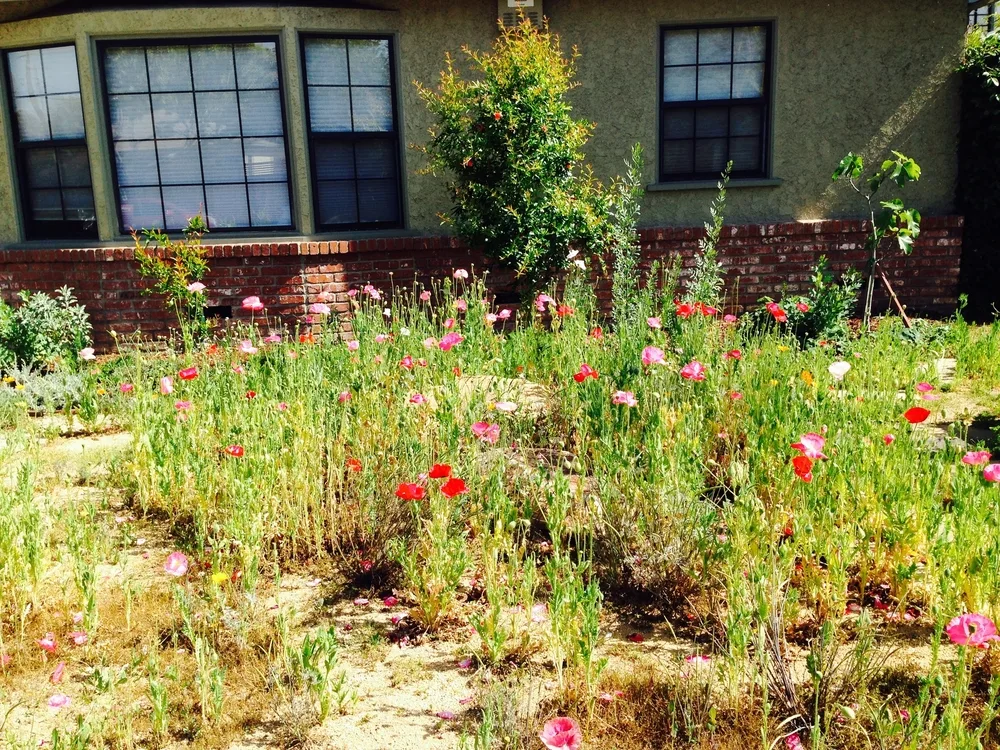
Bees and other pollinators are losing their natural habitats to our increasing footprint. Whether you live on one acre or a hundred, consider leaving a part of your property wild. Or consider rewilding your garden.
Even mowing your lawn less frequently can help. You’ll attract more wildlife than just bees to your yard. And think about it, not just the pollinators are benefiting, by leaving parts of your property undeveloped, that’s less lawn to mow.
2. Grow a pollinator garden.
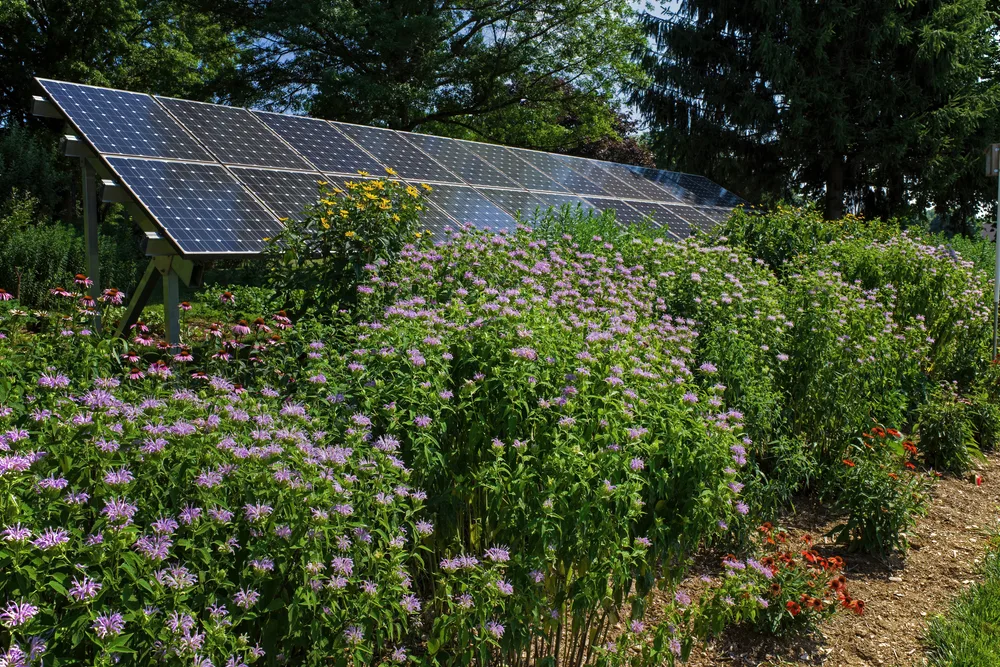
Pollinator gardens are becoming more and more popular. And again, you can utilize a little or a lot of space.
Pollinator gardens are an excellent addition to your permascape too. But it takes more than just plunking a few flowers in your flower beds to have an impact on the local pollinator population. You need to take into account what pollinators you are planting for – what do they eat, and where do they nest.
3. Be mindful of where your plants come from.
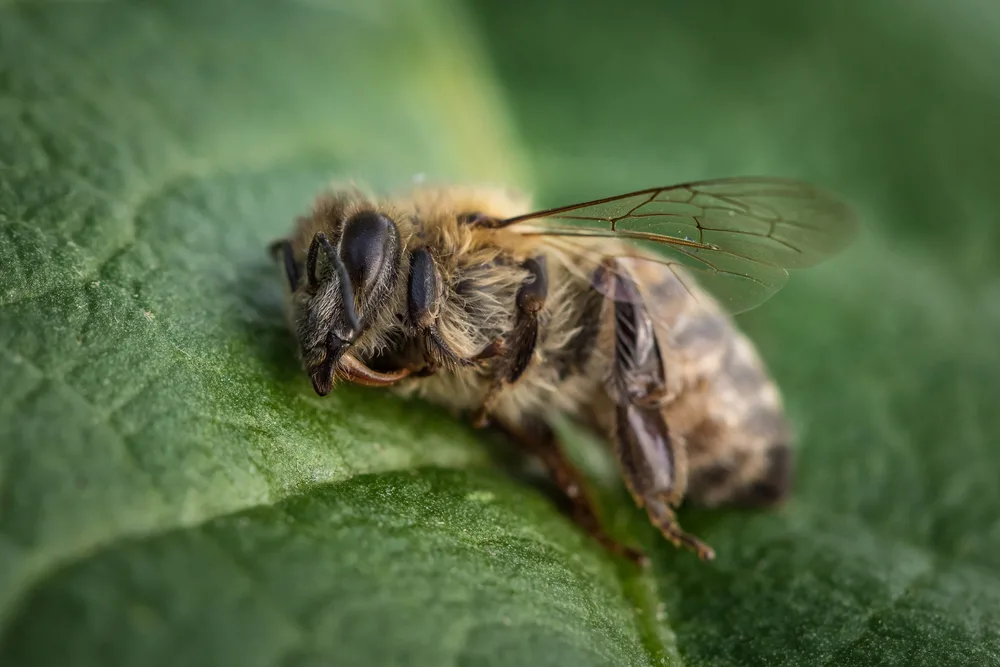
Neonicotinoids are increasingly showing up in the news these days with devastating results on bees and birds. Don’t purchase plants treated with harmful pesticides for your garden.
Big chain retailers are notorious for selling plants treated with neonicotinoids. But there is always the DIY option, consider growing your own garden starts and using organic seeds.
4. Choose pollinator-friendly methods of pest control.
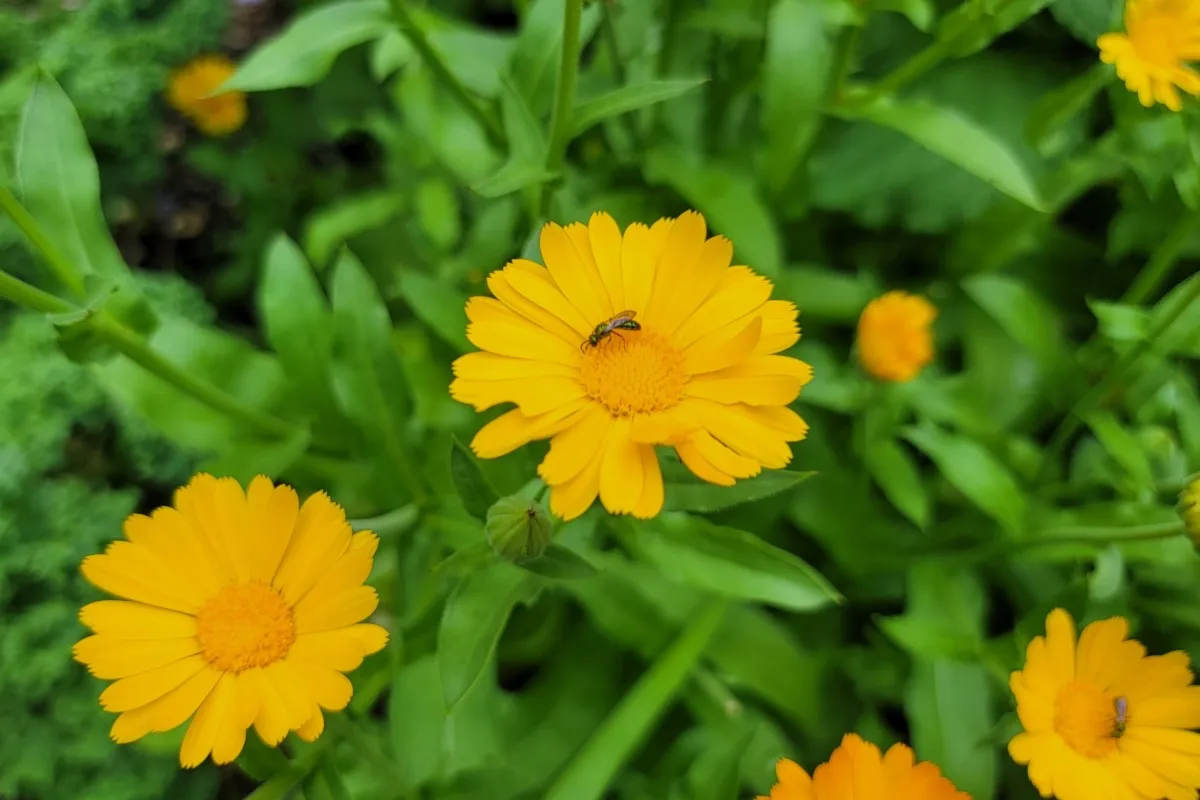
Many people automatically assume that because something is natural or organic, it’s okay to use and won’t have adverse effects on pollinators. That simply isn’t the case.
Take diatomaceous earth, for instance, it’s an entirely natural powder made from the fossils of diatoms. But it can be harmful to bees who pick up the pollen from plants dusted with it.
Do your research when dealing with garden pests and look for pollinator-friendly alternatives. Specifically, check to see that what you are using is bee-friendly.
Here are just a few that you should avoid:
- Ambush
- Bayer Systemic
- Orthene
- Diazonin
- Raid
- Seven
- Diatomaceous Earth
- Insecticidal soap or oil
- Copper Sulfate
- Sabadilla
5. Set up a hummingbird feeder or two.
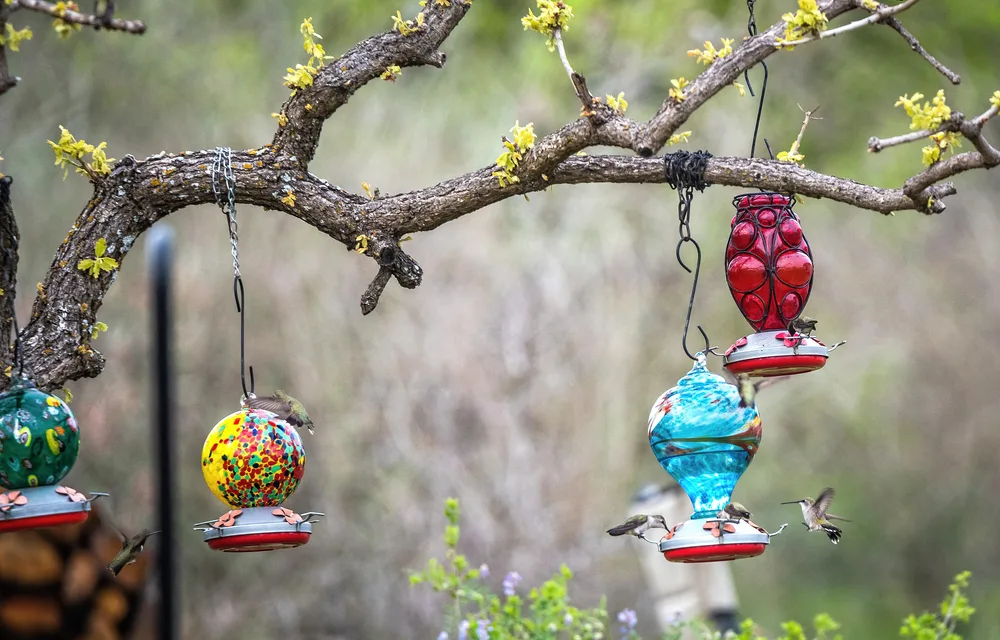
Hummingbirds are pollinators too, and their numbers have also been declining. Use plain white sugar and water in a ratio of 1:4 to make hummingbird nectar. Mix the sugar and water until the sugar dissolves, it’s easier if you heat the water. Let the nectar cool before you fill your feeder.
Never add red food coloring, it’s not good for the hummingbirds and is unnecessary, most feeders already have red on them. If you hang more than one feeder, hang them in different spots in your yard to avoid aerial battles. Change out the nectar and clean the feeders every other day or at least twice a week.
6. Consider planting milkweed.
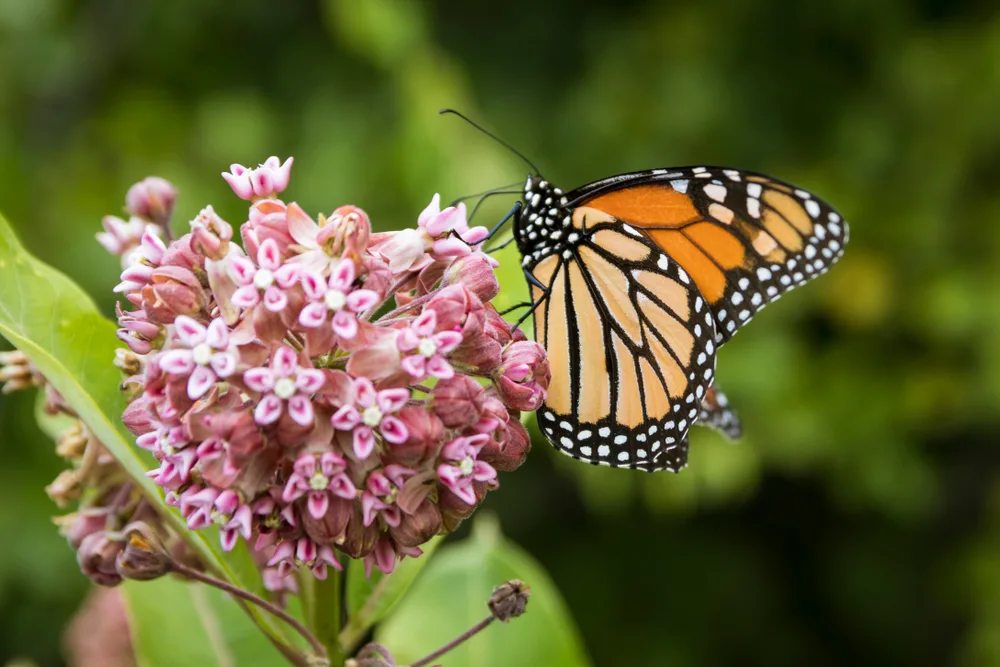
Monarch butterflies’ diet consists solely of milkweed. As we develop lands, this plant is disappearing, and with it, so is the Monarch’s food source and breeding ground.
To help conserve this beautiful butterfly add (or leave it to grow) milkweed to your yard.
7. Keep your yard neat and messy.
At the end of the growing season, leave some leaf litter and standing grasses, even pieces of wood for pollinators to nest in during the winter. Many pollinators nest on the ground and too tidy a lawn leaves them with few places to live and breed.
You want to provide a diverse landscape for pollinators to nest in. Tall grasses, flowering trees, sandy patches, all of these play a role in pollinator preservation, not just planting flowers.
8. Host a Bee B&B.
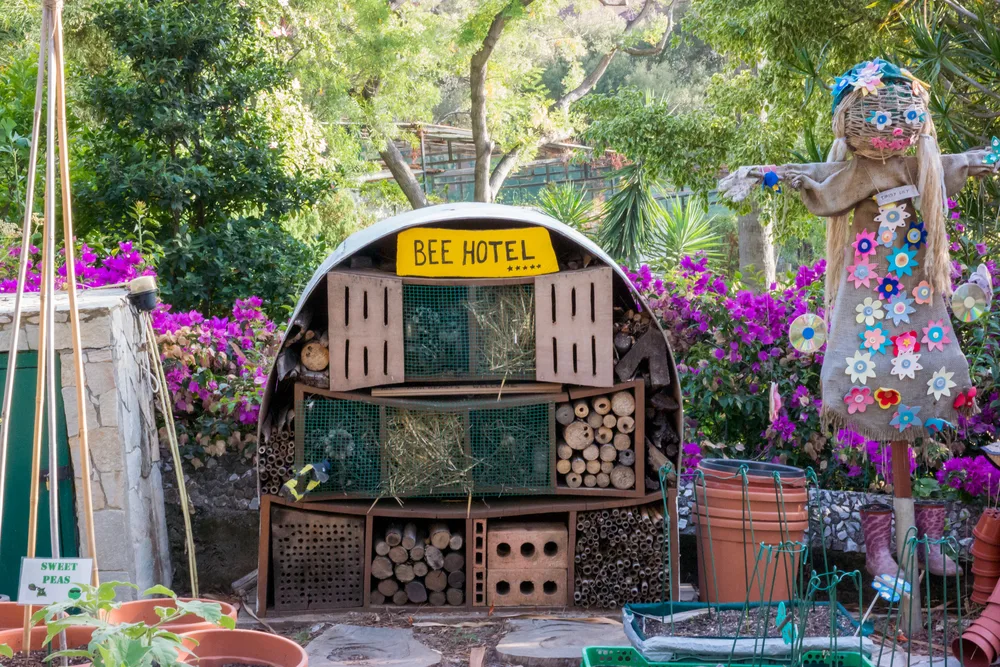
Add some bee hotels to your yard. Believe it or not, the majority of bees don’t nest in hives. Give bees a place to live and breed by putting bee hotels around your property.
Dr. Grozinger stressed the importance of good hygiene when it comes to hosting bee hotels. These are not a set it and forget it landscape feature. You need to clean the bee hotels every year after the bees have bred and left so they can be used again, usually in early spring.
Go a step further and let that drippy garden hose stay that way. Some bees use mud to build with, and having a patch of mud in your yard helps them along. Got a bare spot of ground? Skip the grass seed and leave it to the bees.
9. Add a water feature or birdbath to your yard.
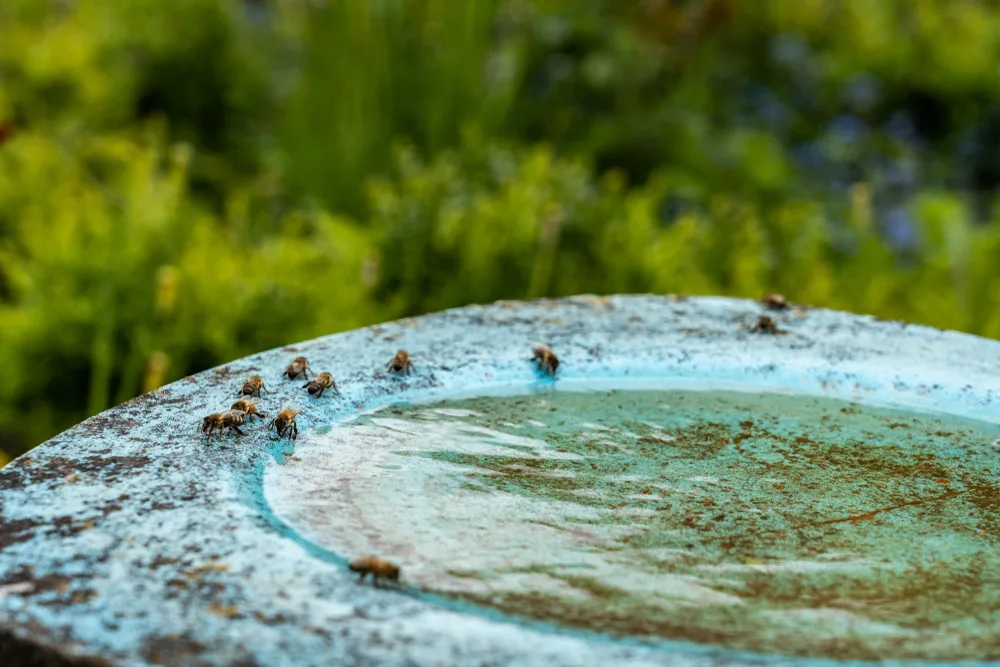
Much like all the other flora and fauna, bees need water to survive. So, give them a fresh supply by adding a small pond. Or set up a birdbath and keep lots of critters in your backyard happy.
You will need to change the water frequently to deter mosquitos from breeding in it.
10. Keep it local.
When you’re choosing plants for your property, be it trees or flowers, try to opt for species native to your area. I know it’s tempting to go for that flashy new petunia you saw at Lowe’s, but if your goal is to appeal to pollinators going native is your best bet.
These are the plants that wild bees and other local pollinators eat and use to build their nests in the wild.
Be sure to avoid these common invasive plants and instead choose one of the native alternatives suggested.
Want to see if your property makes the cut?
Check out this great resource Dr. Grozinger was kind enough to share with us – Will the Bees Like it Here.
The Penn State Center for Pollinator Research put together a checklist that assesses how bee-friendly your landscape is. Once you’ve completed the questionnaire, you’ll have a better idea of what improvements you need to make your landscape more appealing to bees.
In Our Community
As important as it is to help out at home, Dr. Grozinger said one of the most important things we can do, “is raising awareness of yourself and the people around you. The reason bees are great ambassadors for the wild is that they really are everywhere. You just have to look.”
With that in mind, she suggested a couple of things we can do to raise awareness of the pollinator decline in our communities.
11. Where are the flowers?
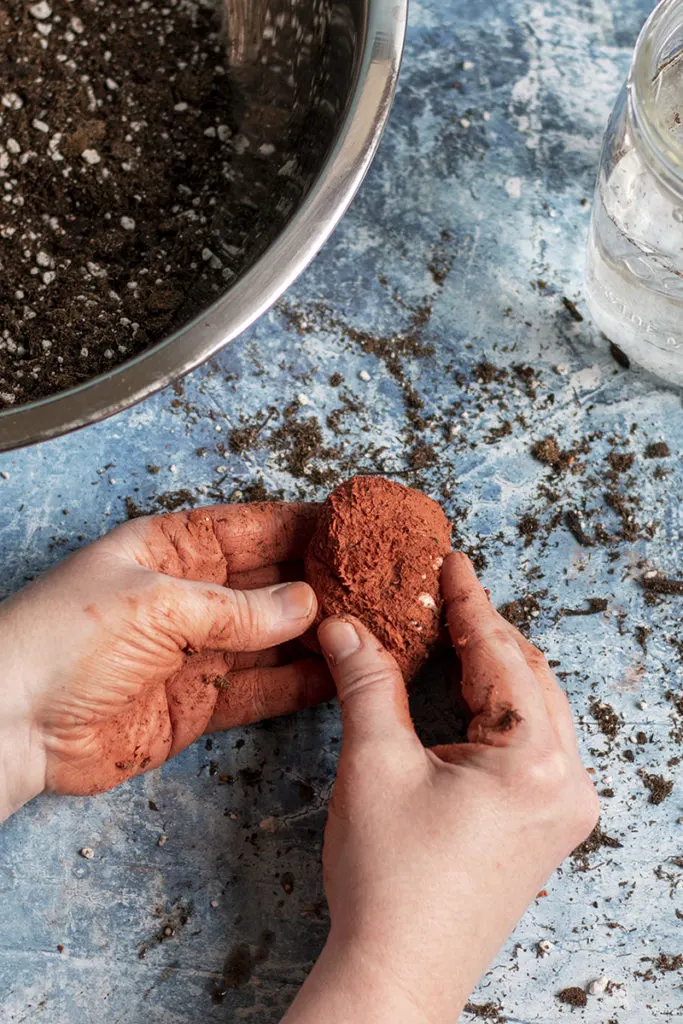
Pay attention when you are out in your community. Are there flowering plants? Do you see bees on them? If not, can you encourage shop owners and your town to plant more flowers?
Or take matters into your own hands by spreading wildflower seed bombs in your community or your own property.
12. Plant the right trees.
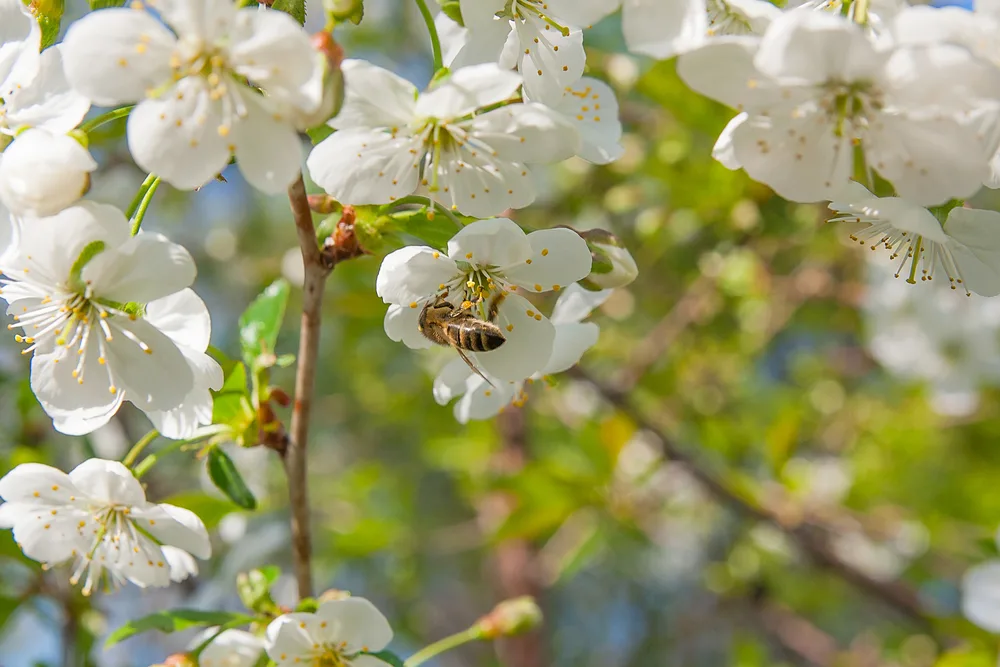
Work with your town council to persuade them to choose flowering trees when considering the addition of new trees.
Bees in urban areas don’t have access to fields full of flowers, and so they rely more on flowering trees. Trees such as hawthorn, cherry, and dogwoods are great options.
13. Make your town wild.
Again, work with your town to leave more areas wild—petition for more natural spaces to be incorporated within the city limits. Work to add diverse and natural plant life back into the city landscape.
The loss of such a tiny little insect is having a massive impact on us as a society.
And I don’t think we’ve felt the full effect of it yet. By being aware of these small creatures and the critical role they play, we can begin to turn the tide and give our natural pollinators a fighting chance.
In helping them, we are helping ourselves.
For more information, here are a few more resources.
Beescape.org – this is a site geared towards beekeepers. It populates data provided by beekeepers so you can ‘see’ what your landscape looks like to a bee. The data that is collected helps aid entomologists in their research to help pollinators. The site is still growing, and you can help!
The Pennsylvania Pollinator Protection Plan (P4) – while this was put together for Pennsylvanians, the information is still applicable to other areas. It provides best practices for protecting our pollinators.
Xerces Society for Invertebrate Conservation – Identification & Monitoring Guides – These are fantastic and free, downloadable field guides to help you identify and monitor the pollinators that are native to your specific area. Download the one for your area and get the kids involved in bee-watching.
The Monarch Butterfly in North America – the USDA has an information-packed page with everything you need to know to help these beautiful pollinators.
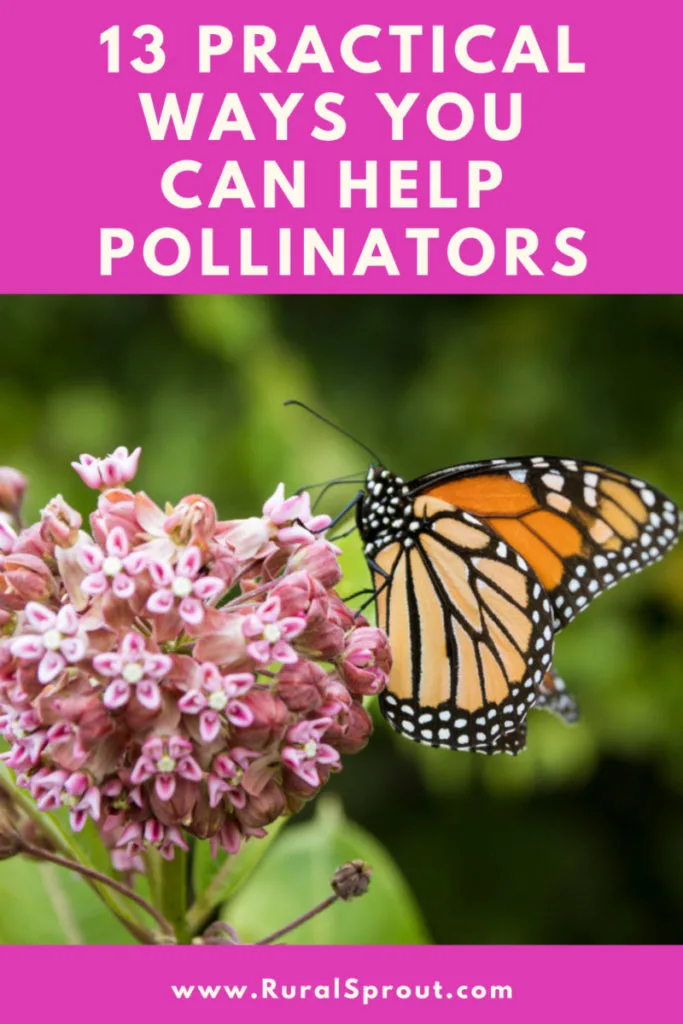

Get the famous Rural Sprout newsletter delivered to your inbox.
Including Sunday musings from our editor, Tracey, as well as “What’s Up Wednesday” our roundup of what’s in season and new article updates and alerts.


